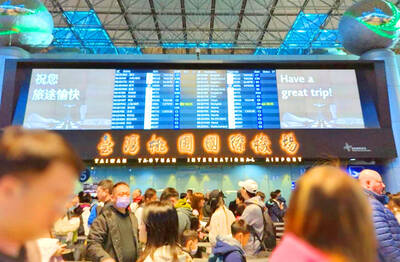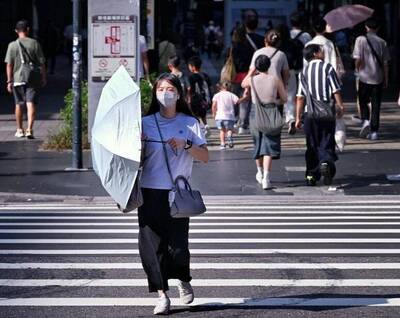The military balance in the Taiwan Strait is tilting in China’s favor, and the gap is widening as the Chinese People’s Liberation Army (PLA) modernizes its arsenal, an annual defense white paper released by the Japanese Ministry of Defense yesterday said.
Defense of Japan 2020 says that “the overall military balance between China and Taiwan is shifting in favor of China, and the gap appears to be growing year by year,” in its section on China’s relations with foreign countries and regions.
China has been building and modernizing the PLA at an unprecedented rate, while Taiwan relies heavily on US arms sales, the paper said.
“While the United States has continued and reinforced its engagement in Taiwan, China has repeatedly expressed its strong protest against Taiwan’s independence,” it said.
The military threat has increased since President Tsai Ing-wen (蔡英文) won her second term in January because of her administration’s opposition to the “one country, two systems” model proposed by Beijing for cross-strait unification, it said.
Analyzing China’s military strength, the white paper said the PLA, PLA Navy and PLA Air Force all have significant advantages over their Taiwanese counterparts, both in quantity and quality.
Though the PLA does not have enough amphibious assault forces to occupy Taiwan in a full-scale invasion, it has been significantly expanding its landing ship forces over the years for that purpose, the paper said.
Taiwan is strengthening its asymmetric warfare capabilities by investing in developing and building its own military aircraft and vessels, including stealth corvettes, the paper said.
Taiwan deploys US-made PAC-2 and PAC-3 anti-ballistic missile systems, but some analysts have case doubt on the systems’ capabilities to counter an airstrike by Beijing, which has thousands of mid-range ballistic missiles that can reach Taiwan, it said.
The while paper said that the Japanese government would keep close tabs on the military buildup on both sides of the Strait, US arms sales to Taiwan and Taipei’s ongoing efforts to invest in indigenous weapons systems.

Temperatures in northern Taiwan are forecast to reach as high as 30°C today, as an ongoing northeasterly seasonal wind system weakens, the Central Weather Administration (CWA) said. CWA forecaster Tseng Chao-cheng (曾昭誠) said yesterday that with the seasonal wind system weakening, warmer easterly winds would boost the temperature today. Daytime temperatures in northern Taiwan and Yilan County are expected to range from 28°C to 30°C today, up about 3°C from yesterday, Tseng said. According to the CWA, temperature highs in central and southern Taiwan could stay stable. However, the weather is expected to turn cooler starting tonight as the northeasterly wind system strengthens again

Foreign travelers entering Taiwan on a short layover via Taiwan Taoyuan International Airport are receiving NT$600 gift vouchers from yesterday, the Tourism Administration said, adding that it hopes the incentive would boost tourism consumption at the airport. The program, which allows travelers holding non-Taiwan passports who enter the country during a layover of up to 24 hours to claim a voucher, aims to promote attractions at the airport, the agency said in a statement on Friday. To participate, travelers must sign up on the campaign Web site, the agency said. They can then present their passport and boarding pass for their connecting international

COOLING OFF: Temperatures are expected to fall to lows of about 20°C on Sunday and possibly 18°C to 19°C next week, following a wave of northeasterly winds on Friday The Central Weather Administration (CWA) on Sunday forecast more rain and cooler temperatures for northern Taiwan this week, with the mercury dropping to lows of 18°C, as another wave of northeasterly winds sweeps across the country. The current northeasterly winds would continue to affect Taiwan through today, with precipitation peaking today, bringing increased rainfall to windward areas, CWA forecaster Liu Pei-teng (劉沛滕) said. The weather system would weaken slightly tomorrow before another, stronger wave arrives on Friday, lasting into next week, Liu said. From yesterday to today, northern Taiwan can expect cool, wet weather, with lows of 22°C to 23°C in most areas,

Taiwan sweltered through its hottest October on record, the Central Weather Administration (CWA) said yesterday, the latest in a string of global temperature records. The main island endured its highest average temperature since 1950, CWA forecaster Liu Pei-teng said. Temperatures the world over have soared in recent years as human-induced climate change contributes to ever more erratic weather patterns. Taiwan’s average temperature was 27.381°C as of Thursday, Liu said. Liu said the average could slip 0.1°C by the end of yesterday, but it would still be higher than the previous record of 27.009°C in 2016. "The temperature only started lowering around Oct. 18 or 19